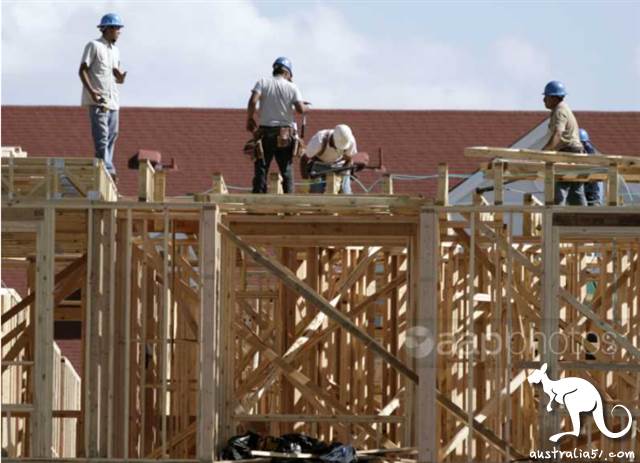
The real estate Chamber of Commerce (Property Council) has urged the Federal government to extend the house allowance to stimulate construction in the construction industry, according to a new study published today by the Federal Finance and Investment Corporation (National Housing Finance and Investment Corporation), which has plunged the number of immigrants and reduced demand for housing by 129,000 to 232,000 over the next three years (HomeBuilder).
real estate Chamber of Commerce also hopes government launch a new immigration program to help increase demand for housing.
The country's biggest drop in population growth since the first world war will drive a sharp decline in new housing construction, which could hinder australia's recovery from the economic recession caused by the new crown pneumonia, the state house finance and investment company said in its report.
Demand for housing is expected to fall between 129,000 and 232,000 units over the next three years, which will hit the construction sector, which is critical to economic recovery.
house rents, especially in the inner cities of sydney and melbourne, are also facing sharp declines as rental property is vacant, and the lack of foreign students has exacerbated the decline in the number of immigrants expected to settle in australia.
Over the past decade, about 60% of Australia's population growth has been driven by net overseas migration, adding 2.7 million people to the country. However, the closure of borders and the movement of people between countries, as well as concerns about the movement of people between countries around the world, as a result of the new crown pneumonia epidemic, will lead to a sharp drop in immigration.
The collapse in the number of international students, who account for nearly half of net overseas immigrants, has forced some universities to cut staff.
The National house Finance and Investment Corporation, which provides housing demand advice to federal government, predicts that, in the worst case, the national population will decrease by 214,000 between 2019 and 2021, compared with the absence of a new crown pneumonia epidemic.
This will be Australia's slowest year of population growth since 1916 to 1017, when many Australians went overseas to participate in World War I.
A sharp decline in population will directly lead to less housing demand.
Following the construction of some 162,000 housing units last year, the State house Finance and Investment Corporation believes that fall to 137,000 this year, to 108,000 next year and then to 72,000 in 2022.
If population growth is slightly better than the worst forecast, the market will bottom to 110,000 by 2022. This is even the worst annual performance since the 1980s.
A decline in construction will exacerbate the economic pain Australia feels.
"If this decline continues, it could lead to a contraction in construction activity, which could exacerbate the decline in economic ," the study said. "
"Australia's second wave of infectious diseases could further slow population growth, exacerbate the depth of economic decline and hinder the recovery of basic housing demand. "
A decline in population growth will also hit house rental markets, especially those that rely on international students, the company said.
Rent has fallen by more than 22 per cent since March in downtown Melbourne commercial district. Rent fell by more than 13 per cent in the adjacent South Bank (Southbank) area.
Sydney's Darling Hearst (Darlinghurst) district has been one of Australia's worst-hit rental markets, with rental advertising falling nearly 25 percent. House rents are down 15% across the city of Haymarket in Rock (The Rocks) and Chinatown.
This week's data are expected to show that population growth slowed to its lowest level since 2005, at 1.3 per cent, mainly due to a decline in net migration. These figures will cover the first three months of the year, including only some of the early border closures, mainly from countries such as China.
Research released Thursday by the Reserve Bank's economic department also highlighted the potential impact of the coronary virus outbreak on the rental market.
It found that rents in the urban suburbs would remain depressed for a long time.
They found :" The closure of international borders has exacerbated the demand shock as the flow of international students and other migrants who normally rent has slowed. "
"In the coming years, rents in these inner cities will likely remain below pre-New Crown Pneumonia expectations due to slowing population growth and an increase in the expected supply of apartments in these markets. "

